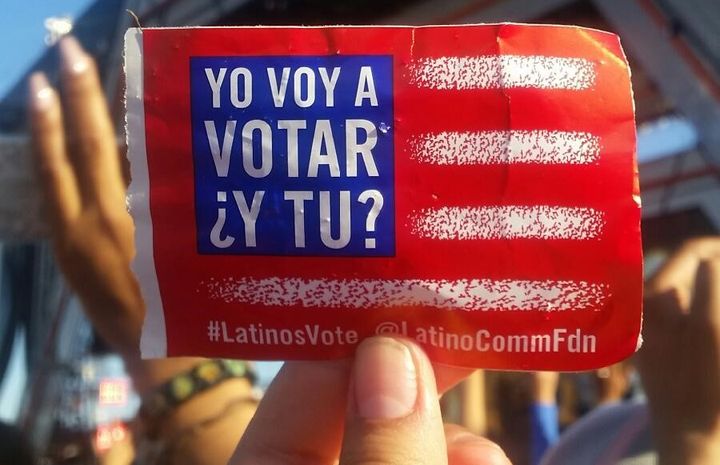
Eight weeks ago, the Latino Community Foundation (LCF) embarked in a campaign to register Latinos to vote across the state of California. The Yo Voy a Votar ¿Y Tú? Campaign reached over 8 million Latinos and registered 6,835 new voters. The work is part of a concerted effort by a myriad of organizations ensuring that California’s electorate is reflective of the state’s demographics.
Thanks to the work of this large set of players like NextGen CA, Mi Familia Vota, California Calls, Dolores Huerta Foundation, among many others, the numbers of registered Latinos have been on the rise. According to our sources at Political Data Inc., there are 4.5 million Latinos registered to vote in California—an increase of nearly 300,000 since August 2016 and up by 1.1 million since January 2016. A majority (70%) are first time registrations by Latinos!
The lessons for the Latino Community Foundation were as important as the results of the Yo Voy a Votar ¿Y Tú? Campaign. Latinos in California make up the largest Latino voting bloc in the nation—with 6.9 million eligible voters. Yet, only 44% of these eligible voters were registered in 2012. Registration, or lack thereof, is often cited as a primary reason why Latinos have low voting turnout rates. Getting to them before the October 24th deadline was of upmost importance.
LCF and its partners—SIREN, Mi Familia Vota, and Fathers and Families of San Joaquin—trained over 100 bilingual canvassers and deployed them at large scale events like the Marc Anthony concerts in Los Angeles and Rise Up as One event by Univision in San Diego. The teams worked diligently in Stockton, Fresno, and San Jose at locations heavily frequented by Latinos to register them and talk to families about the importance of their votes. LCF also identified Latino influencers to get the word out about the Campaign and encourage millennials to vote. In one weekend, the #YoVoyaVotarYTu reached 5.9 million impressions on social media.
In less than two weeks, we will know whether or not the increase in registrations will translate into a higher percentage of votes cast by Latinos. If the June Primaries are any indication, the answer will be YES! In June, according to the California Civic Engagement Project, Latino registered voter turnout increased to 38%, up 22 percentage points from the 2012 primary.
But our work is far from over. One common theme we heard on the ground by Latinos of all ages was “it doesn’t matter because California is not a swing state!” To that, our response was a resounding, YOUR VOTE IS YOUR VOICE! And, here is why:
1) The results of the election will directly impact our communities. There are 17 State Propositions on the ballot. The issues on the ballot range from bilingual education in our schools, gun control, repealing or altering the death penalty, tobacco taxes to regulations for prescription drug prices. Depending on where you live, there are numerous other local measures to consider. The results of this election will have an immediate impact on our neighborhoods, families, and children. The ballot measures will also alter the education, healthcare, and criminal justice system. Latinos have the power of shaping these decisions when we Get Out the Vote!
2) This is more than just a presidential election! With all the media attention on the national election, it is easy to forget that there are more than two people on the November 8th ballot. California electorate will also elect a U.S. Senator and decide on 53 U.S. State Representative races, 20 State Senator races, and 80 State Assembly Member races.
3) A higher Latino turnout makes our democracy more reflective of our needs and values! In California, Whites comprise 43% of the adult population, and 60% are likely to vote—in contrast to the 34% of the Latino adult population of which only 17% are likely to vote. Elected officials respond to the people who vote and invest significant public resources in communities with high voter turnout. And, equally important, future candidates turn to voters to engage them and learn about what matters in their communities.
As the percentage of Latino voter turnout increases (even if by a few points!), it will have critical implications on how candidates respond to the issues that matter to Latinos. We must continue to build our political power.
Our vote is our voice!
+
